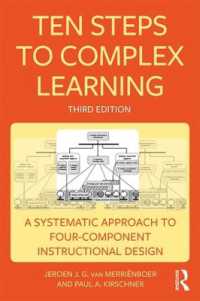Description
The influential authors significantly update their popular introductory text that invites students to reflect on their lives in the context of the combustible leap from modern to postmodern life. The authors show how culture is central to understanding many world problems as they challenge readers to confront the problems and possibilities of an era in which the futures of the physical and social environments seem uncertain. As culture rapidly changes in the 21st century, the authors have successfully incorporated these nuances with many important updates on race and racism, Black Lives Matter, the rise of populist politics, ISIS, new social media, feminist perspectives on sex work, trans and non-gender conforming identities, and more. New to this edition: New data, text box examples, photos, exercises, study questions, and glossary terms appear throughout. New discussions added of arts-based and participatory approaches to research, historical changes in the perception of deviance, legalization of marijuana; Islam vs. secularism in France, new forms of socialization, heteronormative and essentialist language related to sex and gender, intersections of social class and other identities, the prison industrial complex, informal sharing economies, atheism, and more. New text boxes include: Young Saudis Find Freedom in their Phones; How One Stupid Tweet Blew Up Justine Sacco’s Life; School-to-Prison Pipeline; India’s Reproductive Assembly Line; Workers Feel Pain of Layoffs; Like Prohibition, the fight over guns is about something else; and Micro-aggression and Changing Moral Cultures.
Table of Contents
Part One
What is Sociology?
Chapter 1: Sociological Stories and Key Concepts
Chapter 2: Sociological Methods
Part Two
The Social and Cultural Construction of Meaning
Chapter 3: Cultural Structures
Chapter 4: Media and Communication
Chapter 5: Deviance, Crime and Social Control
Part Three
Personal Worlds and Identities
Chapter 6: Socialization and the Life Cycle
Chapter 7: Sex and Gender
Chapter 8: Sexuality & Sexual Orientation
Part Four
Inequalities and Identities
Chapter 9: Social Class and Inequality
Chapter 10: Race and Ethnicity
Chapter 11: Marriage and Family
Part Five
Social Institutions
Chapter 12: Work and the Economy
Chapter 13: Education
Chapter 14: Health and Medicine
Chapter 15: Religion
Chapter 16: Politics, Publics, and the State
Chapter 17: Social Change and Social Movements
-

- 電子書籍
- 太陽を背にうけて 角川文庫
-

- 電子書籍
- 花嫁の首飾り ハーレクイン






